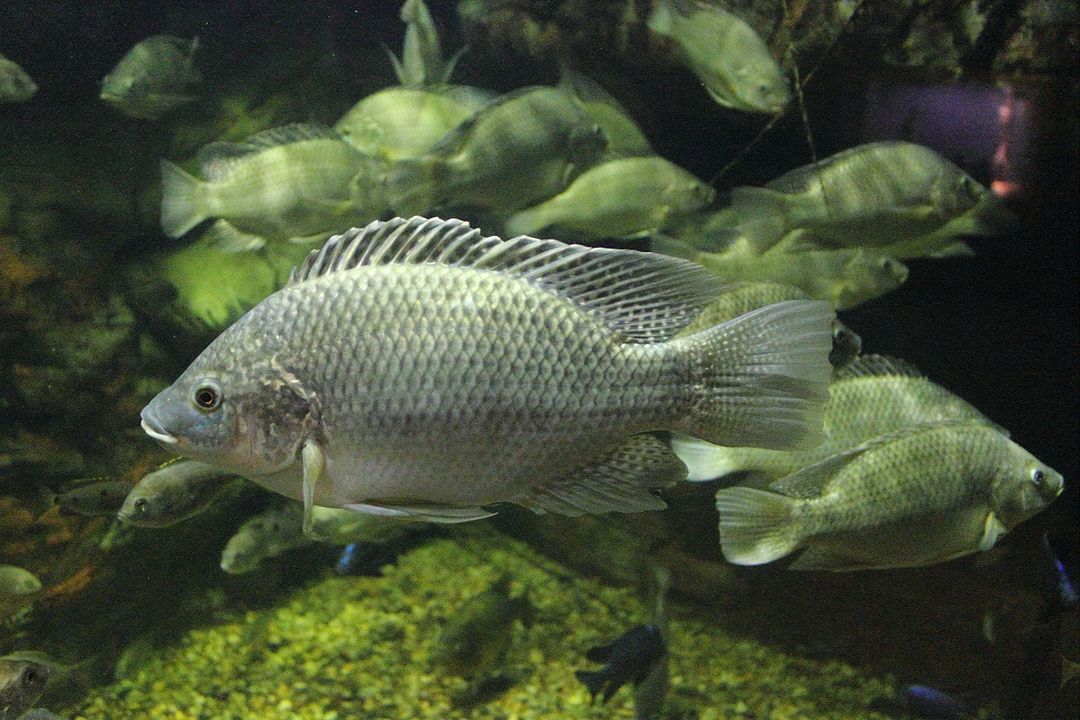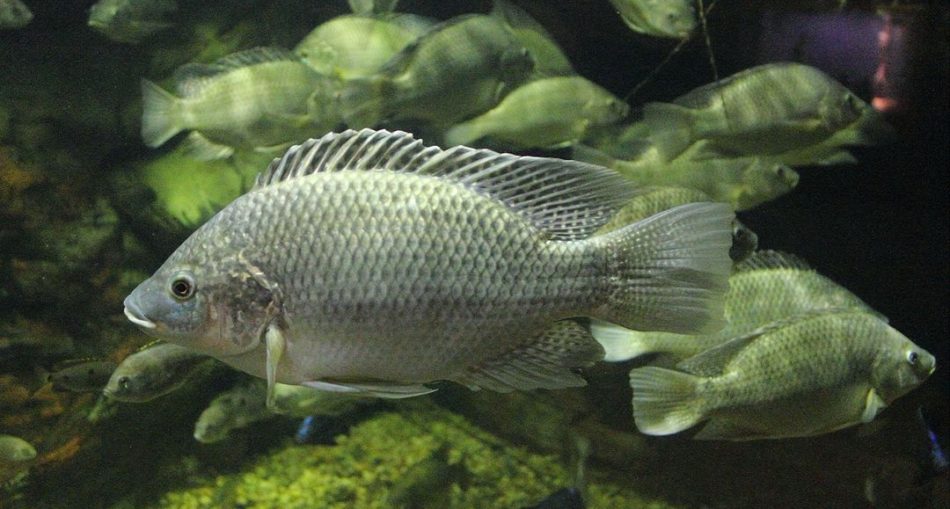The Mozambique Tilapia is a tropical, spiny-finned, freshwater fish belonging to the family Cichlidae. It is one of two species found in Guyana, the other being the Nile Tilapia (Oreochromis niloticus). The scientific name of the Mozambique Tilapia is Oreochromis mossambicus but it is known as daya in Pakistan and mujair in Indonesia. The Tilapia is native to the inland and coastal water of Africa but has been introduced to many regions around the world as a result of its adaptability to many environments and food sources. This includes countries such as Bolivia, Brazil, Colombia, Peru, Suriname, Venezuela and Guyana.
The Tilapia fish is believed to have been introduced to Guyana in 1951 and has since made up a part of the country’s aquaculture and diet. The Mozambique Tilapia (Oreochromis mossambicus) is one of the most popular fish in local aquaculture. They are commercially farmed in earthen ponds in sizes of forty to two thousand (40- 2000) m2, with about two thousand and three hundred (2300) fishes in one pond.
Interesting Tip
- The Nile Tilapia was introduced in the Mozambique Tilapia home range, threaten the fish. However, they have since created a hybrid which will likely result in the eventual disappearance of Oreochromis mossambicus in the region.

The Tilapia – Photo By Greg Hume – Own work, CC BY-SA 3.0, https://commons.wikimedia.org/w/index.php?curid=14010645
Scientific Classification Of The Mozambique Tilapia
- Kingdom: Animalia
- Phylum: Chordata
- Class: Actinopterygii
- Order: Cichliformes
- Family: Cichlidae
- Genus: Oreochromis
- Species: O. mossambicus
Features Of The Mozambique Tilapia
Body – The Tilapia is a relatively thin fish, almost compressed laterally. However, its body is deep with long dorsal fins, the front of which has spines.
Size – The adult Tilapia reaches about fifteen (15) inches in length, weighing up to two point four (2.4) lbs.
Colour – The colour of the Tilapia is dull green or yellow with light bands.
Interesting Tip
- Their size and colour depends on environmental and breeding pressures and varies in captivity.
- Tilapias have a lifespan of up to eleven (11) years.
Diet Of The Mozambique Tilapia
The Tilapia is an omnivore, resulting in the species astounding ability to thrive in numerous locations where introduced. Their diets consist of invertebrates, diatoms (a single-celled alga), detritus (waste), and vegetation like rooted plants and macroalgae.
Interesting Tip
- When food gets scarce, the adult Tilapias will eat the young.
Habitat Of The Mozambique Tilapia
The Tilapia primarily inhabits freshwater or brackish water however it can also live saltwater or conditions where salinity is three times seawater. The fish can be found in ponds, rivers, streams, lakes, estuaries and swamps with water ranging from seventeen to thirty-five (17 to 35) °C
Reproduction Of The Mozambique Tilapia
The Tilapia uses the lek reproductive system where the dominant males are usually successful in mating since they are aggressive, larger and are able to effectively defend territories. Courtship rituals include widespread acoustic communication by the males. Their lower peak frequencies and higher pulse rates attract females. The male typically excavates a nest where the female lays her eggs, after which he fertilizes them. Next, the females keep the eggs in her mouth until they hatch, a process which is known as mouthbrooding. Apart from preparing the nest, the males do little in taking care of the young. There is a visible extended care period by the mother for the young and which is believed to form social relationships.
Interesting Tip
- Some males travel between territories to find a mate, however, dominant males always have a better advantage.
The Mozambique Tilapia In Guyana
The Mozambique Tilapia is one of the tilapia species that has been introduced to Guyana. Since then, it has made up a reasonable part of our local aquaculture, however, it is still mostly produced for domestic markets on the coastland. Like its adaptability to thrive in any conditions, the Tilapia fish can also be cooked in many ways such as curries, stews, grilled, fried and even baked.
Article References
- https://en.wikipedia.org/wiki/Mozambique_tilapia
- http://www.fao.org/fishery/introsp/1725/en
- http://www.fao.org/fishery/countrysector/naso_guyana/en
- https://www.merriam-webster.com/dictionary/cichlid
- https://www.fws.gov/fisheries/ans/erss/highrisk/ERSS-Oreochromis-mossambicus-final-April2018.pdf







